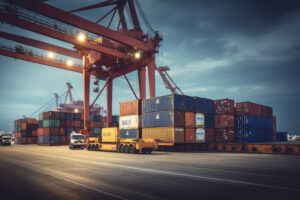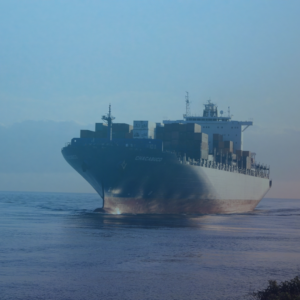By – Lic. Hector Torres.
3. NAFTA
During the first year of AMLO’s government, it is not anticipated that the Maquila Program (IMMEX) [Mexico’s current export manufacturing program] will undergo significant changes. However, the renegotiation of NAFTA might bring some changes in the form how supply chain manufacturing is set up in the aerospace and automotive industry.
Among the significant changes that have been negotiated between the US and the Mexican governments is the increase in percentages in the regional content of parts manufactured in Mexico and the US for their incorporation in the automotive industry. Another important feature negotiated is the significant increase in wages to be paid to certain employees in the automotive industry. Other changes in the free trade agreement incorporate modernizing the customs procedures, mutual cooperation in the fostering of certain economic sectors (like agricultural exports to the US) and the review of the treaty every 6 years.
Both current president Enrique Peña Nieto (“EPN”) negotiators and AMLO’s transition team have worked closely in the negotiations of NAFTA 2.0.
In a formal letter to Trump, delivered on July 12, 2018, and read aloud by his proposed foreign affairs minister Marcelo Ebrard in a press conference, AMLO confirmed his willingness to work together with the U.S. and Mexican administrations on key topics that of course included bilateral trade. Other areas mentioned by AMLO as essential in the government agenda included sustainable development and security at the borders’ immigration.
“Prolonging the uncertainty could slow down investments in the medium and long-term”. “I propose to resume negotiations with the participation of representatives from Mexico, Canada, and the United States.”[1] AMLO wrote in the letter that was posted on his website.
On September, Mexico and the US reached a preliminary agreement that resolved the main bilateral commercial concerns on both sides to continue with a NAFTA 2.0. It is important to note that this was merely a memorandum of understanding and the final drafting is yet to come. After all, Canada has not participated in this preliminary understanding, so further negotiations with the Canadian government may be extended for several weeks.
Mexico and Canada understand the importance of keeping the trilateral free trade agreement (NAFTA) despite the fact that the US government has stated its desire to have bilateral agreements with each county. It will be necessary to follow the upcoming meetings to know the final decision on the immediate future NAFTA.
In October 2018, the uncertainty came to an end, and the Canadian and US negotiators reached an agreement to replace the North American Free Trade Agreement (NAFTA).
The new treaty will be renamed the United States-Mexico-Canada Agreement (AEUMC) or USMCA for its acronym in English.
After more than a year of negotiations, governments have managed to overcome their differences and give in on a compromise regarding some aspects. In the statement, they celebrated the agreement as a good deal for the citizens of this region, in which 500 million people live, and that moves 1 trillion dollars per year in commerce.
4. TOURISM SECTOR.
AMLO is planning to develop the “Tren Maya” (Mayan Train) with 1, 500 kilometers in the south-southeast and south areas of Mexico. If correctly planned and executed, this could represent a good opportunity to open tourism to the states of Tabasco, Chiapas, Campeche, Yucatán, Quintana Roo, and the so-called Mayan Route so that tourists can appreciate the Mayan culture, thereby boosting the economy of the said region. It is well known that this project is considered to be part of the developing infrastructure projects with Public-Private Partnership investment. AMLO wishes this project to be inaugurated in 2021-2022, although certain experts consider such date to be too soon due to the complexities and challenges that this project entails.
5. AGRICULTURAL SECTOR.
AMLO is planning to invest more money from the government budget to create new and better agricultural programs to rescue Mexican agricultural land. The agricultural plan is to turn Mexico’s agricultural land into self-sustaining lands in terms of food. In order that said agricultural lands be rescued, it will be necessary to enact public policies that at the very least guarantee stabilization of prices and good payment terms to producers.
The purpose of this agricultural plan is to lower the dependency of Mexico on the purchase of corn, beans, and rice from foreign producers. “The last report regarding these products, showed Mexico buying 40% of its consumed corn, 20% of beans, and 80% of rice from producers abroad. The plan is intended to promote national consumption.”[2]
6. MEXICAN ENERGY REFORM.
AMLO has repeated on numerous occasions that he will not seek a constitutional change to reverse the 2014 energy reform and will respect the legitimate contracts signed under said reform. However, he has pointed out that his government will make an extraordinary effort to rejuvenate the state-owned oil company Pemex.
Recently, AMLO further stated that his government would invest US$9.4 billion dollars in the state-owned company, including two new oil refineries and the renovation of six existing ones. Additionally, he wishes to give US$4 billion to Pemex for exploration, and he wishes to boost Pemex production from 1.9 million barrels a day to 2.5 million a day within two years
He also stated that his plan is to modernize six refineries. There has been a reconfiguration and modernization process in the Minatitlan, Cadereyta, and Ciudad Madero refineries. This has been done with an investment of approximately 800 million dollars, but as a result of corruption, such refineries are still not operating, and they do not have the capacity to produce gasoline[3].
It is important to state that this is a brief summary of the main points of the AMLO’s National Plan as published. Nevertheless, we consider that the stated items in this memorandum may vary due to the different factors (for example: economic, political, foreign negotiations, etc.). We acknowledge that AMLO’s proposals may be adjusted from time to time, as the Federal Government sees fit.
Note: The content of this memorandum was taken from the interview, news, and Mr. López Obrador’s statements.
[1] Andrés Manuel López Obrador, page 2, fifth paragraph of the letter to president Donald Trump delivered on July 12, 2018.
[2] Andrés Manuel López Obrador, Bulletin 016-06, web page published on August 10, 2017.
[3] Andrés Manuel López Obrador at the Woodrow Wilson Center’s Mexico Institute interview in July 2018.
Should you have any questions and/or comments relating to the above, please do not hesitate to contact us.
Leobardo Tenorio-Malof | ltenorio@tplegal.net
Héctor Torres-López | htorres@tplegal.net
Alejandro Pedrín | apedrin@tplegal.net
Mauricio Tortolero | mtortolero@tplegal.net
Daniel Gancz-Kahan | dgancz@tplegal.net
Alejandro Ceballos | aceballos@tplegal.net



